Utilizing Barn Owl Boxes for Management of Vole Populations
Voles in Idaho
Voles of several species exist in Idaho. Most common in pastures, rangelands, crops, and lawns is the meadow vole, or meadow mouse (Microtus pennsylvanicus). Though they typically weigh 3–4.5 oz, they can nearly eat their weight per day. Voles feed on roots, stems, grass, seeds, and underground tubers and bulbs, making them a potential pest for nearly all crops grown in Idaho.
Though calculating the actual damage they cause is difficult, their ability to breed up to six times per year and their fast maturation can result in epidemic population explosions. The sudden increase, which usually occurs in 10 to 12–year cycles, causes what many producers regard as severe agricultural losses.
Voles are highly elusive. Due to this, few specialized predators, like owls, hunt them effectively year-round.
- Barn Owl Biology
- Utilizing Barn Owls in Agriculture
- Selecting a Barn Owl Box to Purchase
- Building a Barn Owl Box
- Mounting Recommendations
- Recommendations for Placing Multiple Boxes in an Area
- Checking Boxes for Usage
- Other Nesters
- Box Maintenance
- Concerns and Conclusions
- References
- Appendix
- About the Authors
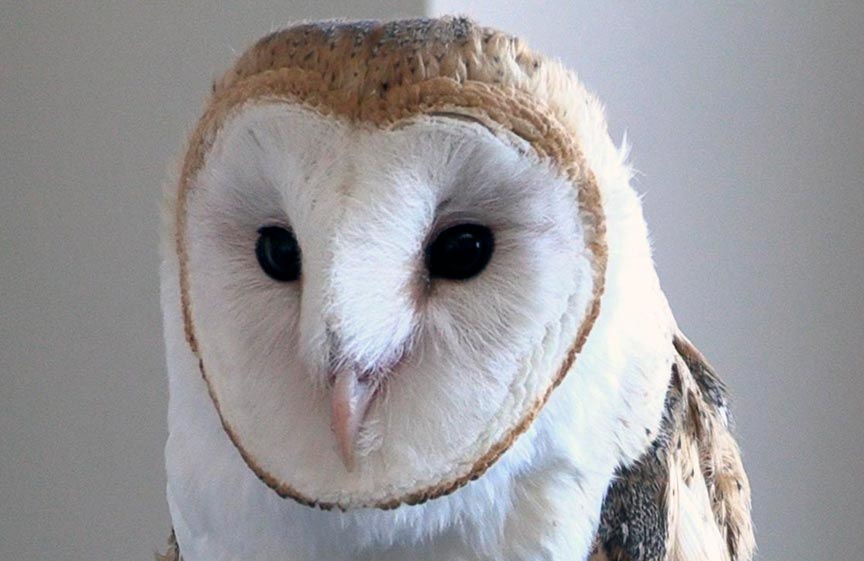
Barn Owl Biology
Barn owls (Tyto alba) are a small bird species widespread throughout most of the United States and regions around the world (Figure 1). They are excellent predators of voles and other rodents. A key to their success is their sense of hearing. Their heads are built like a satellite dish and capable of rotating 270° to pick up as much information as possible. Though barn owls live in a variety of habitats worldwide, a cavity for nesting is a major necessity. In the wild, this commonly takes the form of a hole in a tree or a small cavity in rock. They also readily nest in sites that include owl boxes, barns, hay piles, or abandoned buildings.
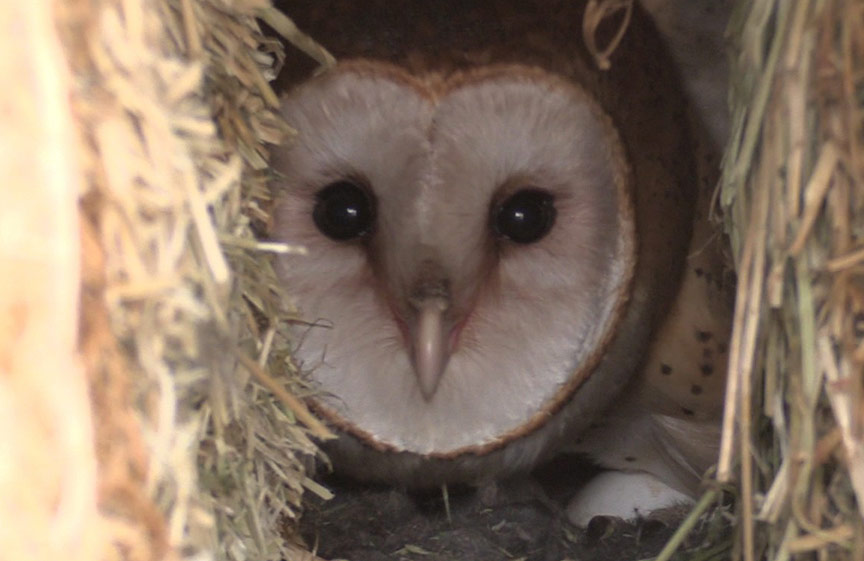
Barn owls do not need a large nesting space, which can be as small as 1 sq ft, though usually they inhabit larger spaces. Even though their space can be tight, hay piles are a popular nesting location—which is unfortunate, particularly because property owners move hay piles (Figure 2). A safer and better nesting option for barn owls is barn owl boxes, which you can provide.
Tight nesting sites provide protection from the elements (especially rain). Owls prefer this type of security because they raise between 1 and 16 chicks, who are particularly vulnerable. In the Pacific Northwest, it is most common for them to raise a single brood in the spring, but a second mating may occur in the summer. After maturation, barn owls do not typically migrate far, migrating an average of 30 mi, but in difficult years they might relocate as far as 790 mi.
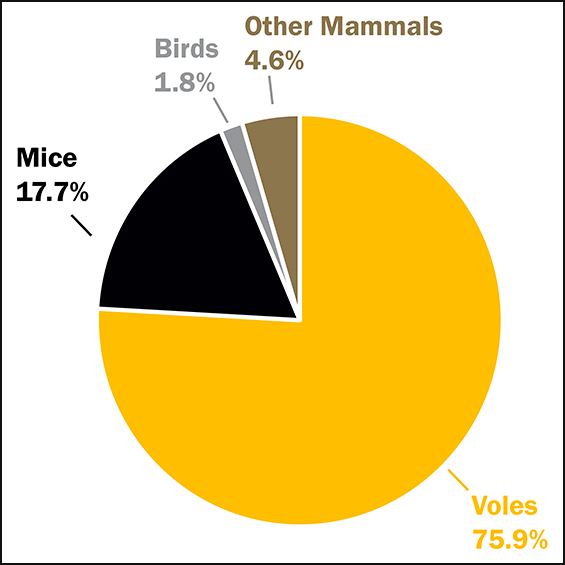
Barn owls are mostly nocturnal birds, which means that most of their activities are at night, although they occasionally venture out in daylight hours, especially in late summer when nights are shorter. During mating season, males do most of the hunting initially, bringing prey back to the female at the nest site who tends to the eggs and chicks. They are specialized hunters with powerful hearing, which allows them to efficiently hunt elusive prey such as voles and mice using hearing alone. Rodents are a dietary staple for barn owls. After studying barn owl pellets (the regurgitated remnants of prey) from an agricultural setting in northern Utah, Carl Marti (2010) discovered that almost 94% of the 111,000 skulls they contained consisted of voles (75.90%) and mice (17.7%) (Figure 3). Typical hunting ranges can vary, but the average scope of a barn owl’s movement occurs within one mile of a nesting site.

Utilizing Barn Owls in Agriculture
For many years, managers have incorporated barn owls into their integrated pest management programs in agricultural settings to help control the growth and spread of rodent populations. Indeed, situating numerous nesting sites on agricultural land in Idaho (which for the most part lacks the proper cavities for nesting) may reduce the need to use rodenticides, which are expensive and unsustainable long-term.
Though most studies indicate that barn owls prefer to nest in boxes placed amid agricultural land, it is not clear that their presence has directly contributed to rodent reduction. This is due to the reclusive nature of rodents. Voles are very difficult to track and monitor, but dietary studies show that barn owls in agricultural land consume large quantities of them: estimates are that an average family of owls, two adults and five owlets, eat more than 2,000 voles in the three months their brood need to reach maturity (Figure 4). Barn owlets feed on an average of three voles/day until they leave the nest at about nine weeks of age. Thus, at the very least, having a barn owl nesting near agricultural land helps to lessen the damage caused by voles and other rodents.
Selecting a Barn Owl Box to Purchase
Barn owl boxes can be purchased online or locally and cost anywhere between $100 and $500, but not all are built of the same material or quality. Research has shown that barn owls prefer to nest in wood boxes rather than plastic ones. We suggest purchasing a box with an elliptical entrance hole that is 3¾” tall x 4½” wide—just big enough for owls to enter, but small enough to reduce predation. Make sure the box either has grooves or a porch to facilitate entry and a clean-out door to facilitate waste removal each year. See the appendix for a list of organizations and other contacts that sell barn owl boxes online or in Idaho.
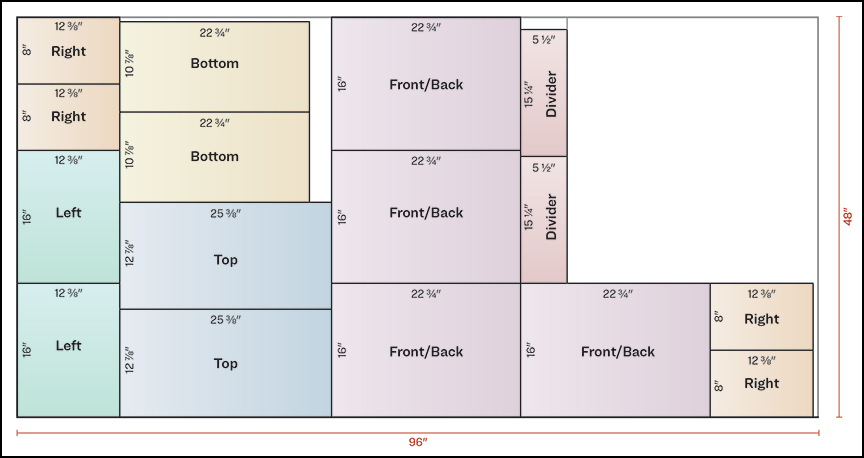
Building a Barn Owl Box
If you have some skill working with carpentry, and the right equipment, building a barn owl box with a youth can be a rewarding, cost-effective experience. You can choose many different tools to complete the project, but you will definitely need saws to cut the wood and the entrance hole. You will also need a drill and the appropriate bits. To build two boxes, you will need a ¾”x 4’ x 8’ sheet of CDX plywood, approximately 100 deck screws (#8 x 1⅝”), 4 square bend hooks (1¾”), 2 door hinges (1½” x 1½”), and wood glue. Start by cutting the plywood according to the dimensions listed in Table 1 and Figure 5. The latter’s diagram shows the dimensions in inches of all the cuts needed to produce two barn owl boxes from a 96” x 48” sheet of ¾” plywood. If you intend to build more than two boxes, using the template will improve your efficiency. You can build two boxes from one sheet.
| Part | Qty | Width | Length |
|---|---|---|---|
| Front | 2 | 16” | 22¾” |
| Back | 2 | 16” | 22¾” |
| Bottom | 2 | 10⅞” | 22¾” |
| center Side | 2 | 12⅜” | 16” |
| Right Side | 4 | 12⅜” | 8” |
| Top | 2 | 12⅞” | 25⅜” |
| Divider | 2 | 5½” | 15¼” |
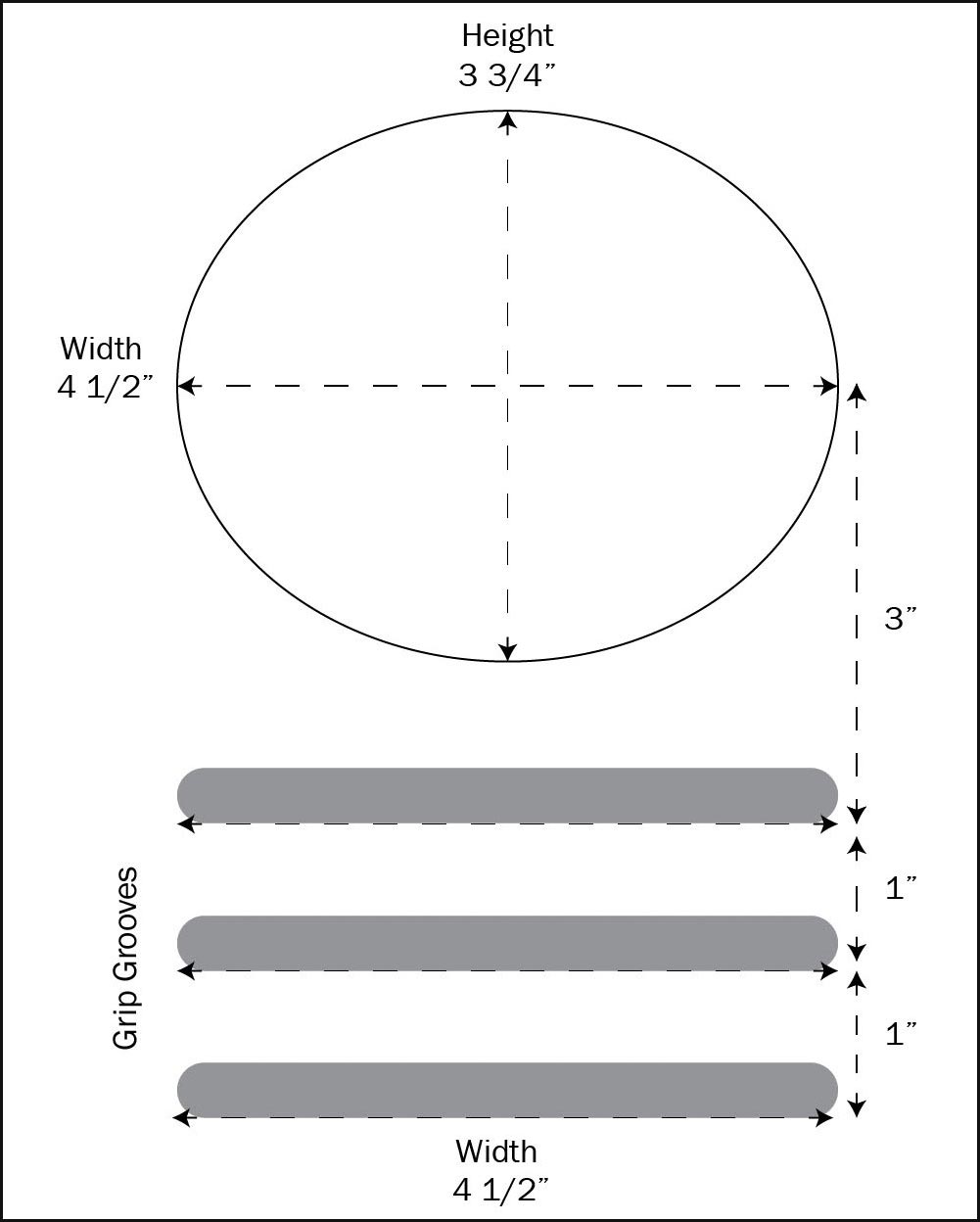
After you’ve finished sawing the plywood parts, cut out an entrance hole in the front part. Print out and use the entrance hole template (PDF) as a guide (Figure 6). First, check your printer settings before printing (in the printer setup, make sure the page scaling is set to none or actual size). Next, verify that the dimensions of the hole (4½” x 3¾”) are true. Last, using a jig saw, begin to make the curving cuts.
To facilitate entry into the box you will also want to cut grip grooves (small indentations in the wood) using a router (route out a channel about ⅛” deep). Alternatively, you can place a couple thin pieces of wood just below the entrance in lieu of the grip grooves. You will also need to cut two small notches in the bottom-right pieces for the clean-out door and the square bend hooks. Predrill the parts for assembly with a 5⁄32” bit. Using Figure 7 as a guide, drill the holes ⅜” from the edge of the top, front, side, and back parts. Red arrows show where to make the necessary drill holes to connect each part to one another. Yellow lines point to other drill holes or significant construction elements needed to complete the box’s construction.
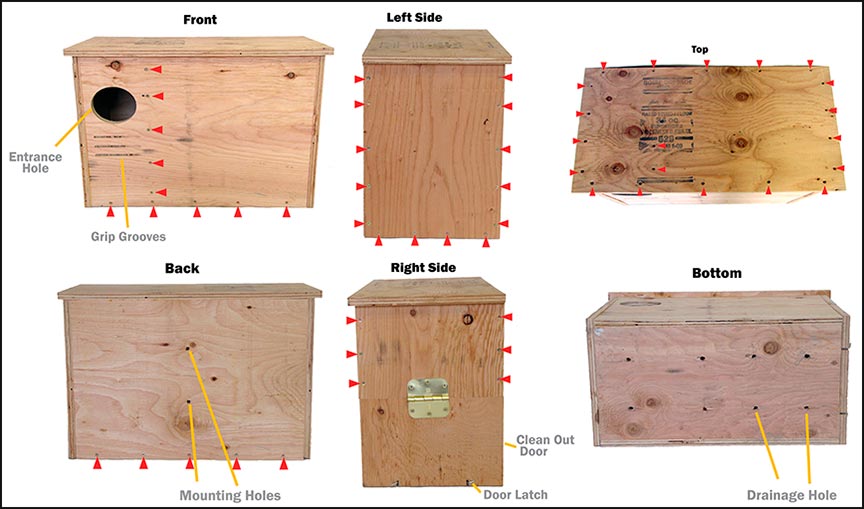
Also note the following:
- the entrance hole on the front and the grip grooves below it facilitate entry into the box
- the mounting holes in the back are best filled with lag screws
- the clean-out door must have a door latch notched in to enable access for the box’s annual cleaning
- cutting drainage holes in the bottom of the nest box will alleviate moisture issues
- adding mounting holes to the back of the box is also recommended
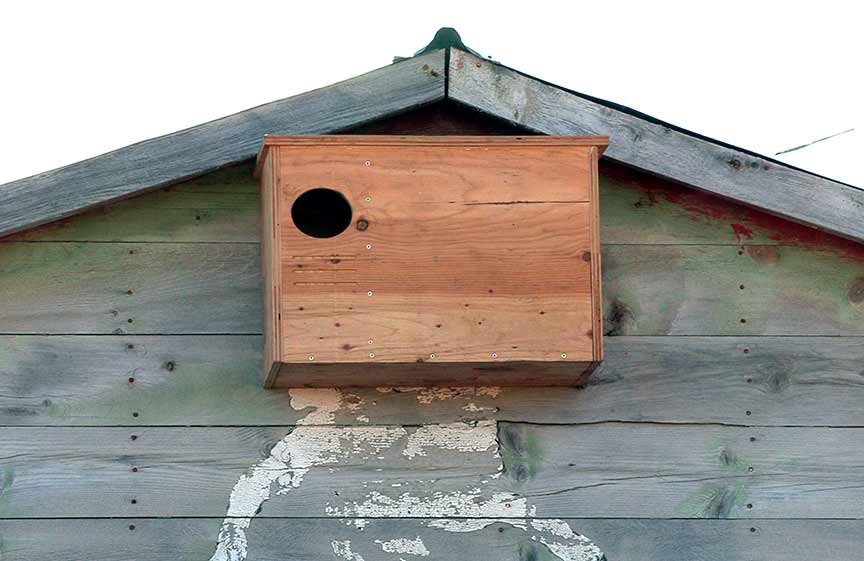
Mounting Recommendations
When deciding on a location for your box, make sure to choose a spot about 8–10 ft off the ground. At that height, there’s less of a chance that people will tamper with it; plus, it will be easier to clean. Mount them to wooden poles, trees, or the sides of buildings. Make sure there is at least a few feet of clearance in front of the box so owls can enter and exit as needed. Do not install the boxes on a power pole that is owned by a utility company or other party without a signed agreement. Face the box’s front, the side with the opening, northward, if possible. According to a thorough study conducted in California, north-facing boxes have the highest nesting rates compared to other-directed ones, though nesting may occur regardless of the direction a box faces. Another convenient location to mount a barn owl box is on the side of a shed or barn (Figure 8). Just be sure there is enough clearance in front of the box for owls to enter and exit. Human activity may also deter barn owl nesting, so choose a quiet location on these structures.
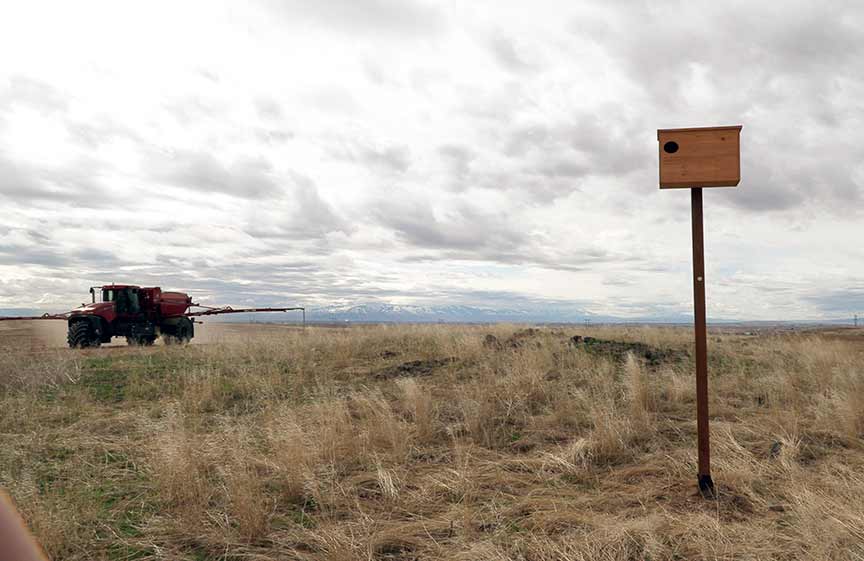
Recommendations for Placing Multiple Boxes in an Area
Place boxes at least 100 ft apart to reduce territorial conflicts. Regardless of territories, prey availability plays a much more important role in whether or not an owl will use the box. In fact, the number of rodents available to eat within about a mile of a box greatly determines owl nesting populations. In California, some operations have tested box placements (as many as 24 boxes/100 acres) in areas where rodent populations were high, resulting in nesting rates as high as 75%.
One of the easiest ways to deploy a barn owl box in agricultural land is to mount it directly on a pressure-treated pole, as shown in Figure 9. Siting it on a pivot corner can also be an effective way to keep it out of reach of machinery and excessive watering. When you first begin putting out boxes, we suggest that you start with a few. Over time, if the nesting rates are good, experiment a bit and put out some more. Currently, research in Idaho about the best management practices regarding the density of barn owl boxes is not definitive; the numbers vary greatly across the state based on many factors.
Checking Boxes for Usage
While barn owls are fascinating to watch and observe, care must be taken to avoid disturbing them, because it can lead to nest abandonment. Without professional guidance and the proper permits, boxes should never be opened during the spring or summer when nesting occurs. Generally, boxes should only be opened in the fall when owls do not nest. A good rule of thumb about detecting whether or not an owl has occupied a box is to check for the presence of pellets (small masses of fur and bones) inside the box while doing an annual cleaning.
Other Nesters
As you monitor your boxes for activity, watch for signs of other nesting species. These may include starlings, kestrels, wood ducks, or songbird species. Be particularly aware of starlings, which are a common pest. They and other songbirds sometimes fill up a box with nesting material that may discourage nesting by other species. In some cases, other predators will kill the nesting starlings and take over the nest regardless, but more research is needed. If you successfully identify starlings (which fly in and out of nest boxes daily during nesting periods), you may legally remove them and their offspring. Other birds should not be disturbed, as they are legally protected under the Migratory Bird Treaty Act.
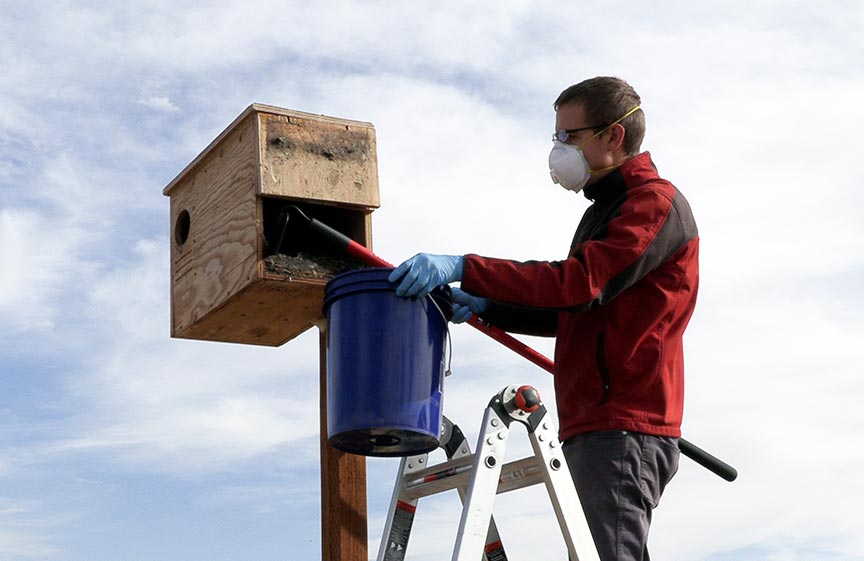
Box Maintenance
In order to increase the odds of continuous nesting, clean out nest boxes every fall season (Figure 10). The box will be filled with a mass of bird waste, including owl pellets, animal remains, and bird poop. This waste often becomes a large mass, so use a hammer or tool to break it apart to simplify its removal. Once the waste is broken up, place it in a large garbage bag and throw it away in a sealed container. Always wear gloves and proper respiratory protection, since contact with bird or rodent wastes can transmit disease. Dumping soapy water into the box is also advisable, because it may prevent dust particles, which can harbor disease, from dispersing into the air and thus facilitate cleaning. Using a Clorox solution can also be used as a surface sterilizer. Finally, using a variety of tools such as a shovel, chisel, or crowbar can improve the effectiveness of a nest-box cleaning.
Concerns and Conclusions
Though barn owls may be a helpful tool in the management of voles, a few hazards likely limit their effectiveness. Rodenticide usage is potentially harmful or even lethal to barn owls through indirect consumption (feeding on an already poisoned animal, such as a vole that ingested the poison). Further study about the effects of rodenticide usage upon Idaho barn owls is needed, but in the interim we encourage farmers who have installed barn owl boxes to avoid rodenticide usage if possible.
Highway traffic provides another imminent danger. Indeed, Idaho’s Interstate 84, which Boves and Belthoff (2012) found has the highest barn owl mortality in the world, is perhaps the most dangerous flyway location for barn owls. Highways in general are problematic for raptors, but owls in particular, because they fly low and often use these areas for hunting. Research is currently being conducted by Boise State University to learn more about low-flight barriers and other methods to prevent highway mortalities.
Regardless of these potential threats, barn owls are still potentially effective natural tools to help manage vole populations in Idaho. Utilizing barn owls and reducing the perils described above may create a more sustainable environment where vole populations cause only minimal damage. By building or purchasing a barn owl box that is deployed properly, you are helping provide habitat for birds of prey and helping Idaho agriculture reduce the consequences of vole pressure.
References
Arnold, E. M., S. E. Hanser, T. Regan, J. Thompson, M. Lowe, A. Kociolek, and J. R. Belthoff. 2019. “Spatial, Road Geometric and Biotic Factors Associated with Barn Owl Mortality along an Interstate Highway.” Ibis 161(1): 147–61.
Boves, T. J., and J. R. Belthoff. 2012. “Roadway Mortality of Barn Owls in Idaho, USA.” The Journal of Wildlife Management 76(7): 1381–92. doi:10.1002/jwmg.378.
Browning, M., J. Cleckler, K. Knott, and M. Johnson. 2016. “Prey Consumption by a Large Aggregation of Barn Owls in an Agricultural Setting.” In Proceedings of the Vertebrate Pest Conference 27 edited by R. M. Timm and R. A. Baldwin, 337–44. Davis, CA: University of California-Davis.
Chandler, D. Barn Owl. London: New Holland, 2011.
The Cornell Lab of Ornithology. NestWatch. “Barn Owl: Nest Box Plan and Information.” https://nestwatch.org/learn/all-about-birdhouses/birds/barn-owl/, accessed 18 September 2019.
Gunn, D., R. Hirnyck, G. Shewmaker, S. Takatori, and L. Ellis. 2011. Meadow Voles and Pocket Gophers: Management in Lawns, Gardens, and Cropland. PNW 627. University of Idaho, Oregon State University, and Washington State University. 16 p.
Locke, S., I. Parker, and R. Lopez. 2005. "Use of Remote Cameras in Wildlife." In The Wildlife Techniques Manual, 7th ed., by N. J. Silvy, 311–18. Baltimore, MD: Johns Hopkins University Press.
Marti, C. D. 2010. “Dietary Trends of Barn Owls in an Agricultural Ecosystem in Northern Utah.” The Wilson Journal of Ornithology 122(1): 60–7. http://www.jstor.org/stable/40600377.
Marti, C. D., A. F. Poole, and L. R. Bevier. 2005. "Barn Owl" (version 2.0). In The Birds of North America, A. F. Poole, ed. Ithaca, NY: Cornell Lab of Ornithology. https://doi.org/10.2173/bna.1.
Appendix—Where to Buy Barn Owl Boxes
In Idaho
Canyon County Weed and Pest Control Department 208-459-0510 or weed-gopher@canyonco.org
Portneuf Soil and Water Conservation District 208-244-5011 or Cali Johnson portneufswcd@gmail.com
University of Idaho Extension Offices
Minidoka County 208-436-7184 or minidoka@uidaho.edu
Oneida County 208-766-2243 or oneida@uidaho.edu
Power County 208-226-7621 or power@uidaho.edu
Online
Barn Owl Box Company, https://www.barnowlbox.com/
JCs Wildlife, https://www.jcswildlife.com/
About the Authors
Jason Thomas—Extension Educator, University of Idaho Extension, Minidoka County
Jacob Rickman—County Extension Agent, Texas A&M AgriLife Extension, Reeves County
Joel Packham—Extension Educator, University of Idaho Extension, Cassia County
Terrell Sorenson—Extension Educator, University of Idaho Extension, Power County
Photo Credits
All photos and images, except the cover image, were created by Jason Thomas, UI Extension—Minidoka County.
BUL 962 | Published May 2020 | © 2022 by the University of Idaho


















